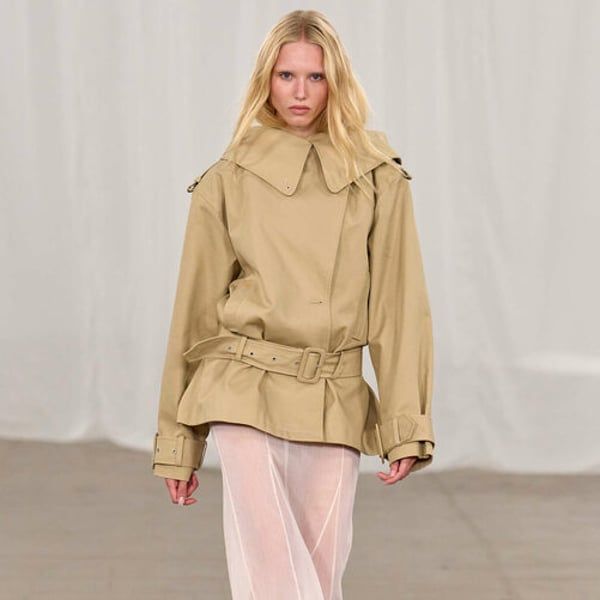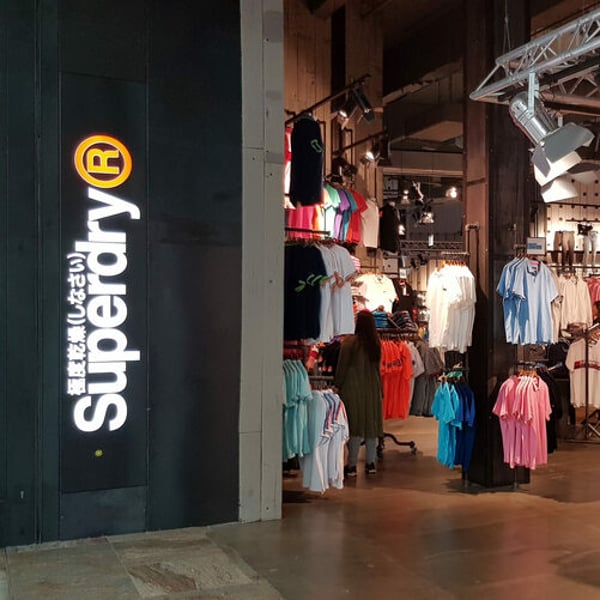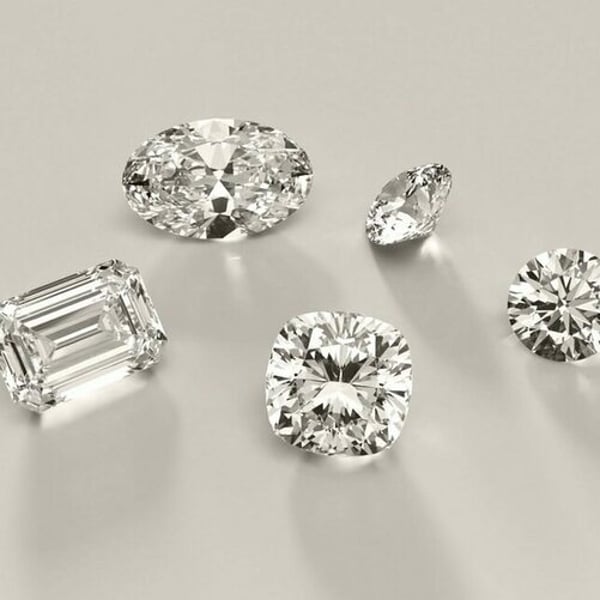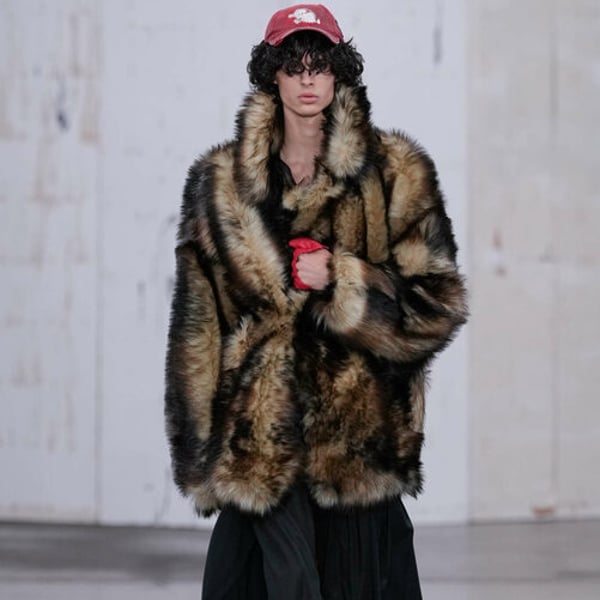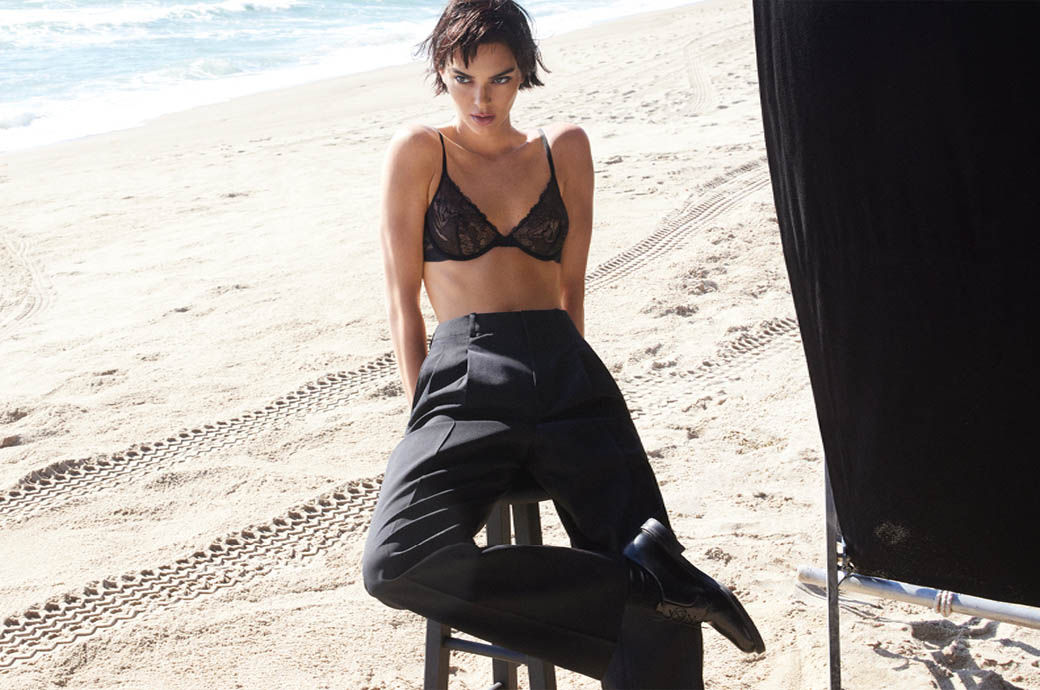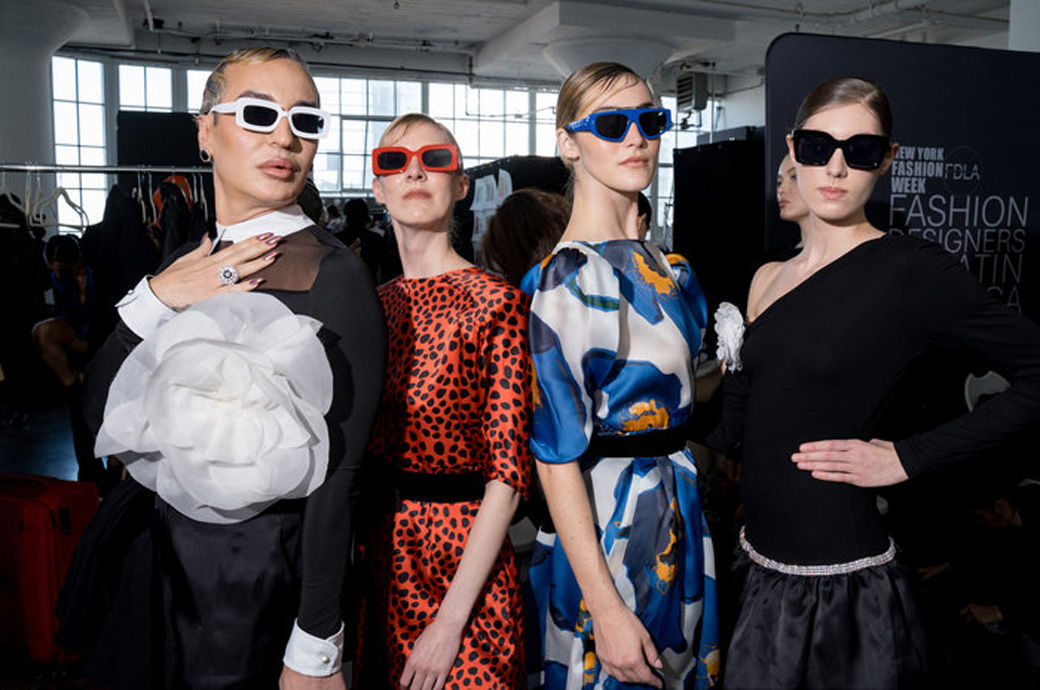Published
August 11, 2025
As he approaches his twentieth anniversary in 2026, Copenhagen's fashion week seems to be strength in force. Highly influential in terms of his pioneering sustainability approach, his last departure last week also offered some strong collections.
Also with anniversaries in his mind, Cecilie Bahnsen returned to Copenhagen's fashion week for a historical moment: a spectacle of the tenth anniversary, which faces the extension of raw concrete of Refshaleøen, a post -industrial peninsula. Partly retrospective, it was both a celebration of the past and its continuous evolution with an aspect towards the future.

Most of the looks were unique, hand -formed in the study. Here was a feeling of extravagance, “not in opulence, but in intention.” The whites and the silver were not the non -tell us, since the label sent a series of liquidations structured with ornaments, applications, ornaments, think of sculptural but soft. The show was titled Hana-BiThe Japanese word for fireworks, composed of the characters for “flower” and “fire.”

The Swedish fashion house Filippa K exhibited in the official CPHFW calendar with the creative protagonist Anna Teurnell “presenting a wardrobe inspired by Marinière of influences of classical and relaxed preparation with a sports touch.” The pieces balanced the functionality and style, going from work and trip, at night and leisure (although work, travel and leisure elements were much more prominent than night).
The presentation was made on the roof of the Copenhagen store of the label in PileTraede, with the stylist Alexandra Carl and 12 models that debut both women's clothes and men's clothes.

These were portable looks easy and instant in a discreet palette of classics and neutral. Think of relaxed custom pants and vests, traditional bomber jackets, breton stripe covers with baggy jeans and a mac line and simplified or traditional trenches.

On the contrary, the Baum und Pferdgarten collection, Tribune notesGalopó in the season “with a refined version in contrast” and strong colors. Inspired by the world of derby, it is based on the “vivid rider uniforms, the movement of the racing track and the elegance of the guests dressed to be seen. It is a playful study of opposites, where sports utility meets the high society glamor.”

The creative directors Rikke Baumgarten and Helle Hestehave were attracted to the sharp color block and silhouettes with a purpose used by riders and extravagant attire of the guests (however, again, as with Filippa K, the jockey styles were more prominent than the appearance of the guests). They occurred to Rayado nylon nylon to what the riders use, while the bold controls and contrasts added “a feeling of movement.” Details with flyers on sports outer clothing “introduce a female tension, subtly reference to classical equestrian clothing.”

There was also under track under the track. The Swiss Born Sloggi brand released an association with the growing brand of luxury women's clothing Nicklas Skovgaard, who was “inspired by the private and intimate world of underwear and sleep”, turning Sloggi into a good partner for the show. Skovgaard worked with the exclusive pieces of the brand, as well as new elements such as 'The Up', a bra of a bending bra as part of the SS26 Zero Feel collection. But even when we were not looking at the complete underwear of Sloggi, there were extravagant enagues, either as pieces of stars or appearing below its exclusive sculptural appearance: means without feet of lace and negligence layers.

Meanwhile, the Rotrate collection captured the mood of a “high summer dream, a season suspended in Golden Light, where femininity takes the center of the stage through fluid fabrics, daring silhouettes and a palette kissed by the sun.” Creative directors said it was their “most feminine chapter so far, where softness becomes an expression of strength.”

It was rooted in a subtle assent to the 1970s, with “a warm nostalgia and bathed by the sun that combines the spirit of the time with the modern refinement of the brand.” The fluidity was key when Capes framed the face, the transparent dresses spared the floor, the silk use costumes hugged the body, and the low necks met with soft demands and jeans.

The exclusive dresses acquired fresh forms of the omnipresent sliding styles of the season and sculptural columns to suction cup tied to the scarf. Lino tailoring debuted in dresses and costumes, while the curtain was key to gauze and satin pieces and injected details injected “a subtle architecture, marrying softness with the shape.”

That may sound demanding, but there were many easy pieces, such as soft blouses combined with jeans, hot pants updates or large blouses for looks of the 70 par excellence.
The palette changed between warm butt neutrals, soft, gray and delicate faded peach pakes, soft yellow and light blue, all accentuated with subtle golden reflexes.

And making its debut, the next offer of rotate shoes included animal print sheets, soft yellow and red accents, and heels with details of sculptural flowers.
Copyright © 2025 Fashionnetwork.com All rights reserved.

